Wood carving is an exciting and creative hobby to choose from. Once you try it, you will love it. Just stock up on the right tools, switch on your fantasy and creativity, and never stop brushing up your carving skills, and you will soon become a true carving wizard!
Animals are one of the favorite choices for beginners and carving masters. So, even if you are new to wood carving, you can start with several easy-to-do animals.
In this article, we will give you all the essential details and useful tips on how to carve animals out of wood.
- How to carve animals out of wood in 5 easy steps?
- #1. Prepare the pictures of your animal
- #2. Transfer the picture to the wood
- #3. Shape your animal
- #4. Give your animal a natural look
- #5. Focus on the details
- What do you need to carve animals out of wood?
- #1. Establish the details of your carving project
- #2. Choose the right wood for carving
- #3. Collect the required tools
- #4. Work on your wood carving skills
- #5. Find out the best finish and the strongest durability
- What type of carving to choose?
- Whittling
- Deep relief carving
- Carving in the round
- Chip carving
- What should I whittle as a beginner?
- How do you cut a little cat out of wood?
- #1. Get the basic tools and items
- #2. Transfer the sample to the wood
- #3. Mark the stop cuts
- #4. Create a basic shape
- #5. Give a final touch
- #6. Polish the final piece
- How do you cut a little bear out of wood?
- #1. Get the tools and items
- #2. Transfer the image to the wood
- #3. Make a rough outline
- #4. Work on the details
- #5. Polish your finished piece
- How do you cut a little elephant out of wood?
- #1. Prepare the materials and tools
- #2. Get an illustration for whittling an elephant out of wood
- #3. Make initial cuts
- #4. Start carving with the head
- #5. Define the elephant ears
- #6. Give a final touch
- #7. Polish the finished piece
- Wood carving FAQs
- Does soaking wood in water make it easier to carve?
- Is wood carving an expensive hobby to start?
- What are U- and V-tools?
- Can you use power tools in wood carving?
- Final thoughts
How to carve animals out of wood in 5 easy steps?
Generally, the carving process doesn’t require many steps to do. You can create awesome animals out of wood in just 5 simple steps:
#1. Prepare the pictures of your animal
Choose an animal you are going to carve out of wood. Find pictures of this animal that are clear to see and easy to work with. For a volumetric figure, you need as many views of your animal as possible.
Remember that your pictures should have fine details you can transfer to the wood while carving.
Print out your pictures and attach them to a block of wood that you are going to work with.

#2. Transfer the picture to the wood
Use graphite to trace out and transfer all the parts of the animal’s body to the wooden block. Don’t forget to transfer all the necessary views of your animal.

#3. Shape your animal
With a help of carving tools, remove the excess wood to shape your animal and form a working blank.
#4. Give your animal a natural look
Make your animal look natural using carving knives, and both U- and V-gouges. Work on the detailed lines to form them as naturally as possible.
#5. Focus on the details
As soon as you create your animal’s figure, focus on the small cuts to make your animal look more detailed. Use a detailing knife to add fine details to your wooden figures, such as eyes, ears, whiskers, paws, tails, and others. All these details make your animal look so real!

What do you need to carve animals out of wood?
#1. Establish the details of your carving project
The first thing to decide is the difficulty level of the chosen animal. For a beginner, it is better to choose animals that are relatively easy for whittling out of wood.
Your chances to complete your first carving project successfully are not so high if you start carving figures that are too sophisticated to cut out.
Next, determine the size of your carving project. Proceed from the dimensions of the wood piece you have.
Keep in mind that you are going to remove the excess wood, so don’t make your animal just the size of the wooden blank. So, your final animal’s size should be smaller than the project’s dimensions.
If you don’t have a piece of wood, make the reverse calculations. Decide what size your project should be, and you can understand what size of wood you will need.
Think of the carving tools and materials you need for this project. The size and the difficulty level of your carving project determine what tools and materials you will need.
The bigger your carving project is, the more tools and materials you need. The difficulty level also matters. When you sum up your whole checklist, calculate the cost of all the materials and tools you need to buy.
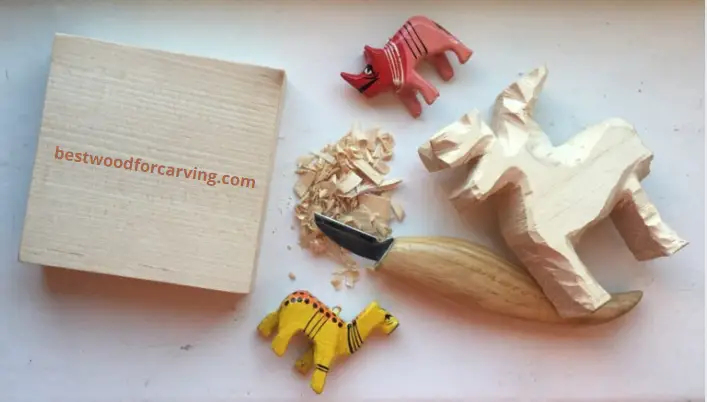
#2. Choose the right wood for carving
When you are learning wood carving, the best idea is to start carving from soft types of wood. They are easy and handy for whittling, and you have fewer risks to cut yourself by accident or fail your carving project.
The best types of wood recommended for beginners are:
- Basswood
- Butternut
- Black walnut
The first two kinds of wood are the best to work with. Black walnut wood is the least popular, as it is actually quite hard. It is more recommended for professionals than for beginners. The biggest pro of this wood is that you require minimal finishing for it. However, with the right tools, you can get excellent results.
Butternut and white pine are also good kinds of wood for whittling.
You can get any kind of wood at any craft store, where they are sold specially for wood carving.
When looking for carving blocks, consider the size of the carving.
To estimate the proper size of your carving, keep in mind to account for an extra 20% carved from the wood block.
#3. Collect the required tools
Among the list of tools, a wood block and a carving knife (or whittling knife) are your key items.
There are some other carving tools you will need:
- Band saw
- Carving gouge
- Chip knife
- Chisel
- Mallet
- Pencil
- Sandpaper
- V-Tool
- Workbench
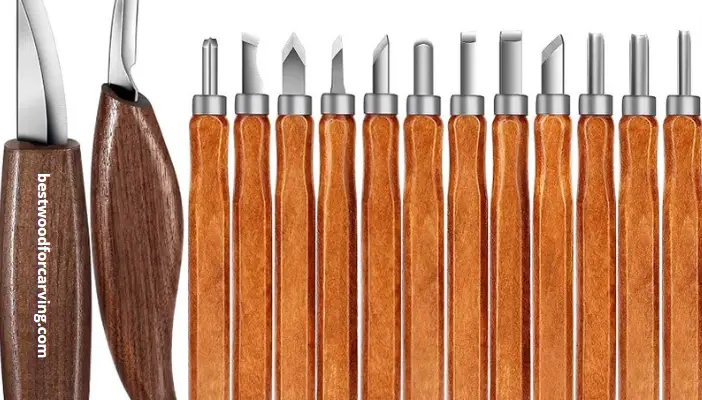
The carving tools from the list above are optional, as you can opt for the power tools as well. However, in this guide, we will not focus on using power tools in carving projects.
Decide what you are going to work with and what you need to buy. In general, carving tools are not very costly, and easy to get at the craft store.
Always use sharp tools! They are especially crucial in the final stages of wood carving. Keep in mind that dull tools can destroy the shape of your animal.
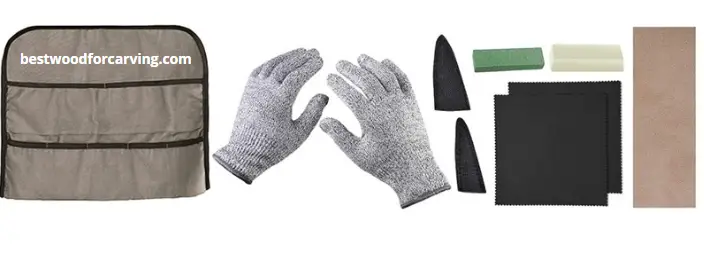
#4. Work on your wood carving skills
For those who are new to woodworking, or don’t use carving tools regularly, brushing up their carving skills is essential. When carving animals, you can practice all the 7 cuts that are in wood carving, as you need to make them look realistic and well-detailed.
However, before you start your wood carving project itself, train a lot. Practice is a crucial part when learning wood carving. So, practice using a carving knife correctly, as well as the other carving tools. Train to do it on a piece of the specific wood you are going to use for your wood carving project.
As a useful bonus, you will also learn more about the nature of the wood. Never carve up against the wood grain, as you can tear the wood when carving in the wrong direction.
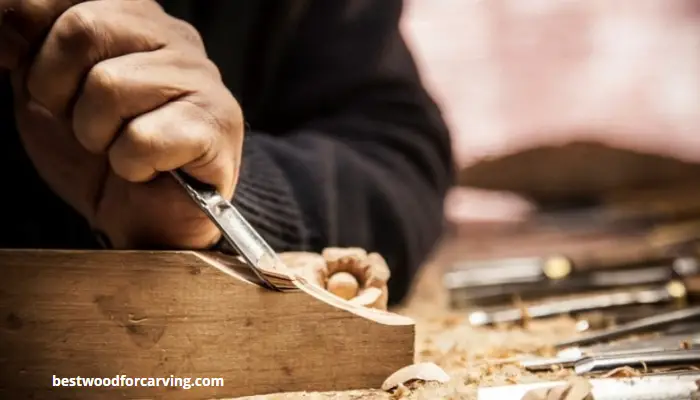
#5. Find out the best finish and the strongest durability
Last but not least is to decide if you need to cover your wood carving with finishing. You can choose among several different methods of applying finishing to the wood. It is not a must-have part to do but is still really good for the durability and aesthetic of your wood carving.
There are some popular methods of finishing:
- Sand your wood carving to make it smooth and shiny
- Deft spray finishing
- Paste wax finishing
- Polyurethane finishing
- Oil finishing
What type of carving to choose?
There are generally 4 types of wood carving:
- Whittling
- Deep relief carving
- Carving in the round
- Chip carving
Whittling
It is the oldest wood carving technique that is generally done with a help of a stiff-handled whittling knife.
To perform whittling, you can use any small knife, such as a straight knife or pocket knife.
As for the beginner, whittling is the best idea as it is the most unique and easiest type of wood carving. When you brush up on your whittling skills, you can proceed with any of the three others.
The drawback of whittling is that the knife leaves behind some sharp and angular strokes. That’s why you always need chisels when whittling to make your figure smoother.
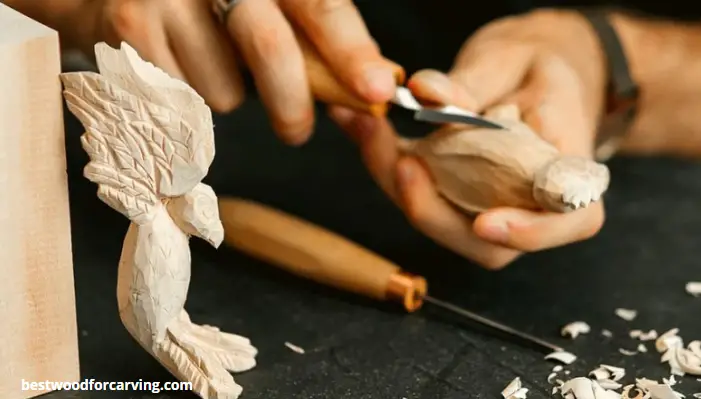
Deep relief carving
Relief carving is a kind of art in which you are carving figures into a flat wooden panel. So, the image is carved inside the wooden panel. From the front, the design appears three-dimensional, while the back part remains flat.
Carving in the round
This wood carving technique is probably the most life-like.
To make this type of wood carving design, you can use plenty of carving tools. As a result, the finished three-dimensional wooden piece has more natural and softer lines.
Chip carving
Chip carving is mainly based on the use of knives, hammers, and chisels. The technique is in chipping away at the wood piece by piece. This way, you can make three-dimensional images and patterns on the wood board. However, like in the relief carving, the back of your wooden piece remains flat.
What should I whittle as a beginner?
To start wood carving, use a simple figure that doesn’t have many difficult details. Brush up your wood carving skills on something easy before you start more difficult projects.
So, what is the easiest thing to carve out of wood?
Carving animals is not the simplest task if you start wood carving. Opt for something flatter and less detailed to enhance your skills before creating three-dimensional wood creatures.
Wooden cutlery is a good choice when you start wood carving. Such items as wooden knives or spoons are popular among wood carving beginners.
Then, you can start carving animals out of wood. Here are the top 10 simplest animals for wood carving:
- A cat
- A dog
- A bear
- A mouse
- A small bird
- A fish
- An owl
- An eagle head
- An elephant
- A moose
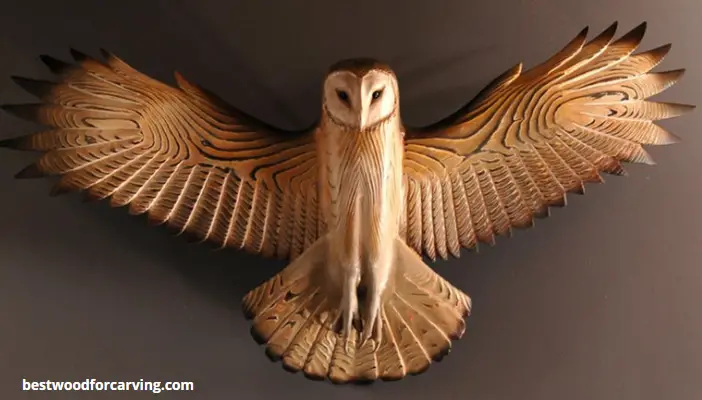
How do you cut a little cat out of wood?
A cat is one of the best options to start with a new wood carving design. Since a cat’s body has a minimalist structure, it is much easier to carve than most other animals. Besides, cats are just so lovely creatures that you will work on this project with pleasure!

#1. Get the basic tools and items
Before you start wood carving, make sure you have everything from the list below:
- An image of the cat (your illustration sample)
- A soft wooden block (basswood, white pine, or butternut)
- Carving knife
- Chip knives
- V- and U-gouges
- Chisels
- Transfer paper
- Clamps and/or a vise (an optional point)
Check the sharpness of your tools. Make several small cuts on a waste wooden piece.
Using a sitting cat image is much easier for wood carving. Keep it in mind when looking for a working sample.
#2. Transfer the sample to the wood
With a help of transfer paper and a pencil, transfer the image of the cat on the soft wooden block.
If you are good at drawing, you can do this task by yourself. When hand-drawing, you have the great benefit to customize the size of your cat.
#3. Mark the stop cuts
With a help of a chip carving knife, make stop cuts on the key points of the cat’s body, such as the face, neck, legs, and tail. Now, you can work within the boundaries of your wood carving structure.
#4. Create a basic shape
Start removing the unnecessary wood from the piece to form the shape of the carved cat. While making this rough outline, use a chip knife and chisels.
For the best results, keep away from the outline while you are removing the excessive wood.
To scoop extra wood from your wooden figure, use a U-gouge.
#5. Give a final touch
Chip the extra wood exactly along the cat’s outline. Remove the excessive wood around the cat’s face.
Settle your cat with a vise on the table, and slowly carve all the necessary details. Use a small knife and U- or V-gouge to do your best.
Be careful with a cat’s face, as it is the most critical part. Be slow and consistent with your cat’s nose so as not to screw it up.
To smooth the rough knife strokes, sand them with chisels.
#6. Polish the final piece
To make your cat look realistic and shiny, use some paste wax, Danish oil, or wood oil to polish your finished piece.
Now, your cat is ready! Show it to your family and friends to make them smile heartily.
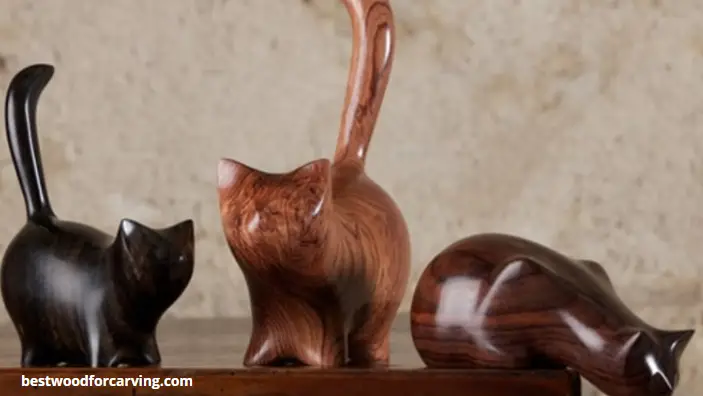
How do you cut a little bear out of wood?
A bear is one more popular animal in wood carving. You don’t need much to create it!
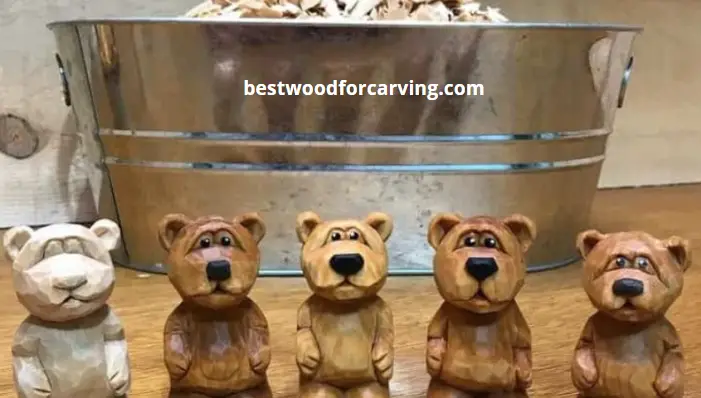
#1. Get the tools and items
All you need is just an image of the bear, a block of basswood (1¼ inch thick and 4½ inches long), a carving knife, and a V-tool.
#2. Transfer the image to the wood
Mark an inch across the top of the block of wood.
Use a pencil and transfer paper to draw a bear on the wood. This mark helps you to point the boundaries for wood carving.
#3. Make a rough outline
Start with the stop points and mark where the bear’s face and feet will be. It is about 13/16 inches across the front of the wood, and 3/8 inches from the bottom.
Start removing the small chunks of wood around the bear’s face and feet until you get the overall shape of your animal.
#4. Work on the details
Separate the bear’s ears from the head, and make them round with a help of chisels.
Define ¼ inches from the ears and draw a straight line for the eyes. Make them detailed, and then draw a V-line between the eyes. Dig into these lines, and carve a bear’s nose.
Carve the bear’s arms extending towards the stomach. Separate the head from the arms.
Don’t forget about the small cuts that help you to make your bear realistic! Use chisels to smooth the rough strokes.
#5. Polish your finished piece
Polishing makes your final piece look better. Use a wax paste, Danish oil, or any wood spray.
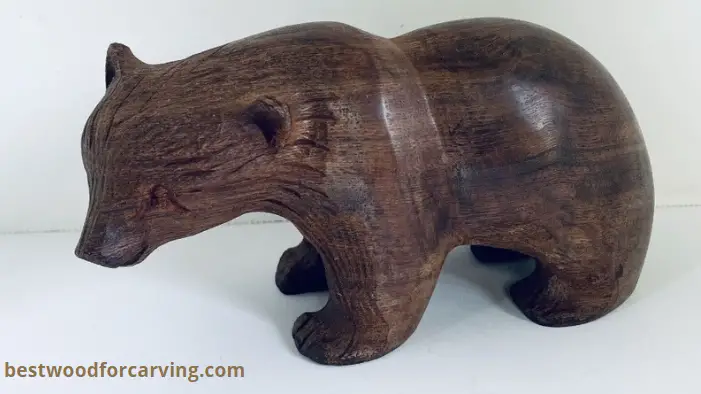
How do you cut a little elephant out of wood?
An elephant is one more awesome animal that you can carve out of wood. Even if your carving skills are still not so high, here are some useful tips on how to carve an elephant out of wood.

#1. Prepare the materials and tools
Opt for a softer kind of wood from a craft store, such as butternut, basswood, or white pine. These woods work the easiest for whittling.
Choose the right type of carving knife. For carving an elephant, chip carving knives with a 1.5 inches (or 3.5-4 cm) blade are an ideal choice. Get the V- and U-gouges for the most realistic results.
To make dig deep into the wood, you need chisels. You can’t create some fine details without making deep cuts with a help of chisels.
Check your carving tools on a waste piece of wood. Apply some basic cuts to see the sharpness of the carving tools.
#2. Get an illustration for whittling an elephant out of wood
For beginners or wood carvers with intermediate skills, a sample picture to get started with wood carving is essential. Take it from a magazine, or print it out from the internet. Then, use a pencil to trace your picture on the wooden block.
#3. Make initial cuts
Make sure that your wooden block is a bit bigger than the picture. When you transfer the elephant to the wooden block, make some large cuts to remove the excess wood and mark the boundaries.
Start with a small chip, as too large cuts can split the wooden block in the half.
When wood carving, you can hold the wooden block with your non-dominant hand, or fix it into the clamps if you wish.
#4. Start carving with the head
Both elephant head and nose follow a round shape. Firstly, make several small stop cuts along the nose. Ensure that you always make cuts along the wood grain. To make this task easier, use a sharp chip carving knife.
In the elephant’s appearance, the trunk is the most important part. So, be consistent while narrowing the elephant trunk up to the necessary level.
#5. Define the elephant ears
When you are done with the elephant trunk, proceed with the elephant ears. Make some stop cuts around the elephant to mark the bottom of the ear. Now, you can form the shape of ears and make the smaller details with a small carving knife and chisels.
Don’t cross the stop cuts in the whole carving process! This way, you can give a definite shape to the whole wooden block you are working with.
#6. Give a final touch
In this final stage, it is recommended to fix the wooden piece into the clamps or hold it inside a vise. Don’t keep the wooden block in your lap while carving, so as not to injure yourself with sharp tools. Finish your piece and create certain realistic details with small knives. Check with your illustration to make your elephant look like a real one.
To make your wooden elephant smoother, use chisels to get rid of sharp angular strokes.
#7. Polish the finished piece
Since your final piece is already done, it is still a good idea to polish it. You can use a wax paste, Danish oil, or some wood sprays. Polishing gives a more realistic look to your carved elephant and enhances the natural color of the wood you use.
Congratulations, your awesome wooden elephant is ready! Now, it is high time to show it off to your family and friends.

Wood carving FAQs
Does soaking wood in water make it easier to carve?
Yes, it can help you while wood carving. But since the wood dries, it can crack and become more brittle overall.
The better way to soften wood for carving is to spray a 50/50 mixture of isopropyl alcohol and water onto the wood and carve with a very sharp knife.
Is wood carving an expensive hobby to start?
No, you can’t refuse to learn wood carving because of money. To start a new hobby, you need just a small pocket knife and a piece of softwood. Don’t be afraid to try using more tools with a bit of practice, as they are not so expensive at all.
The only expensive thing to buy for wood carving is the right wood. Start with something cheaper while you are practicing wood carving. When you learn more, you can buy wood without any fear to waste a lot of costly materials.
What are U- and V-tools?
U- and V-tools (or gouges) are both curved tools used in wood carving.
A gouge has curved cutting edges and shafts, so you can scoop the wood instead of cutting it away.
When choosing U- and V-gouges, keep in mind that their cutting edges vary in width. Generally, they are between 1/16 inch (2 mm) and 2-3/8 inches (60 mm). The shaft shape can be straight, bent, back-bent, or spoon.
Can you use power tools in wood carving?
Yes, you can. These mechanized tools work well both for small and large wood carving projects. When your labor power is not enough, power tools can be your best helpers. For example, you can use a rotary tool or an electric chisel instead of the common chisels.
Final thoughts
As you can see, wood carving is not so fiddly, and carving different animals out of wood is really fun. Always follow the tips from this guide, but don’t be afraid to improvise and make your wooden animals look fancy!
Read also: Types of wood carving you should know

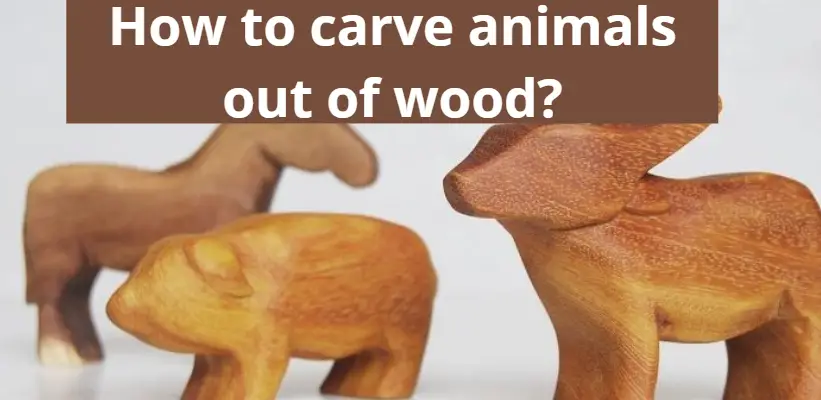
![How Long Does Wood Siding Last? [3 Lifespan Secrets] How Long Does Wood Siding Last: The Best Guide 2024](https://bestwoodforcarving.com/wp-content/uploads/2024/01/How-Long-Does-Wood-Siding-Last-3-Lifespan-Secrets-335x220.jpg)
![Examine [5+ tools and techniques] to cut square hole in wood Cut Square Hole In Wood: 5 Best Ways To Do It Perfectly](https://bestwoodforcarving.com/wp-content/uploads/2024/01/cut-square-335x220.jpg)
![Burn, laser, tool, CNC, hand wood engraving [5 ways explained] Hand Wood Engraving And Other Best Ways To Work With Wood 2024](https://bestwoodforcarving.com/wp-content/uploads/2024/04/bestwoodforcarving.com_-335x220.jpg)
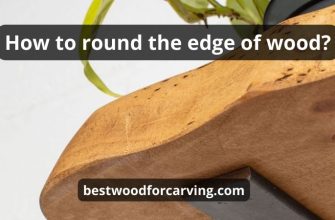
![How long for wood filler to dry? [Tips & Tricks] wood 26](https://bestwoodforcarving.com/wp-content/uploads/2024/01/wood-26-335x220.jpg)

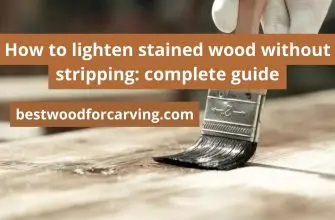
![How to remove white spots from wood furniture? [10 super-easy methods] How To Remove White Spots From Wood : Top 10 Best Tips](https://bestwoodforcarving.com/wp-content/uploads/2023/12/wood-12-335x220.jpg)
